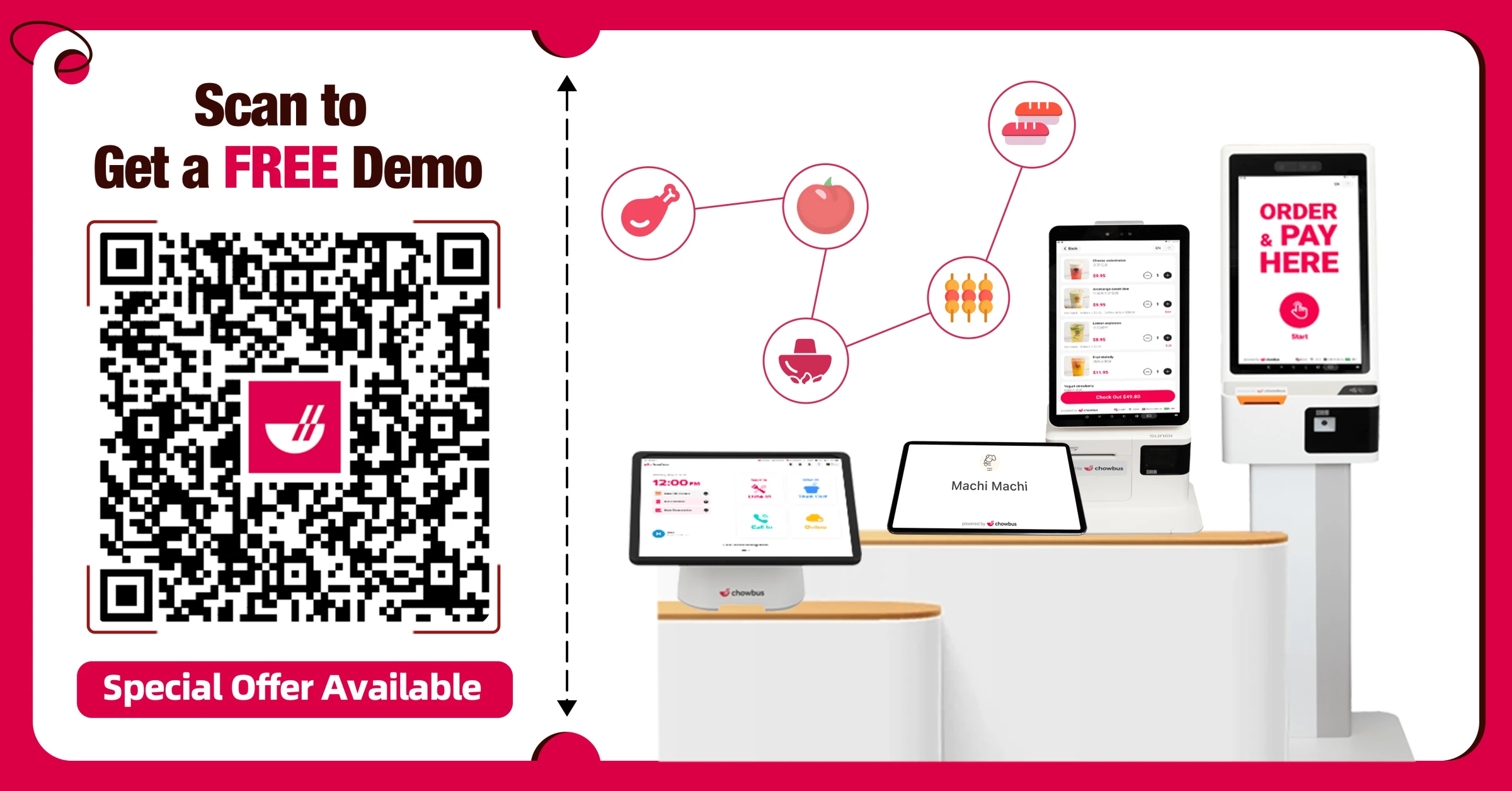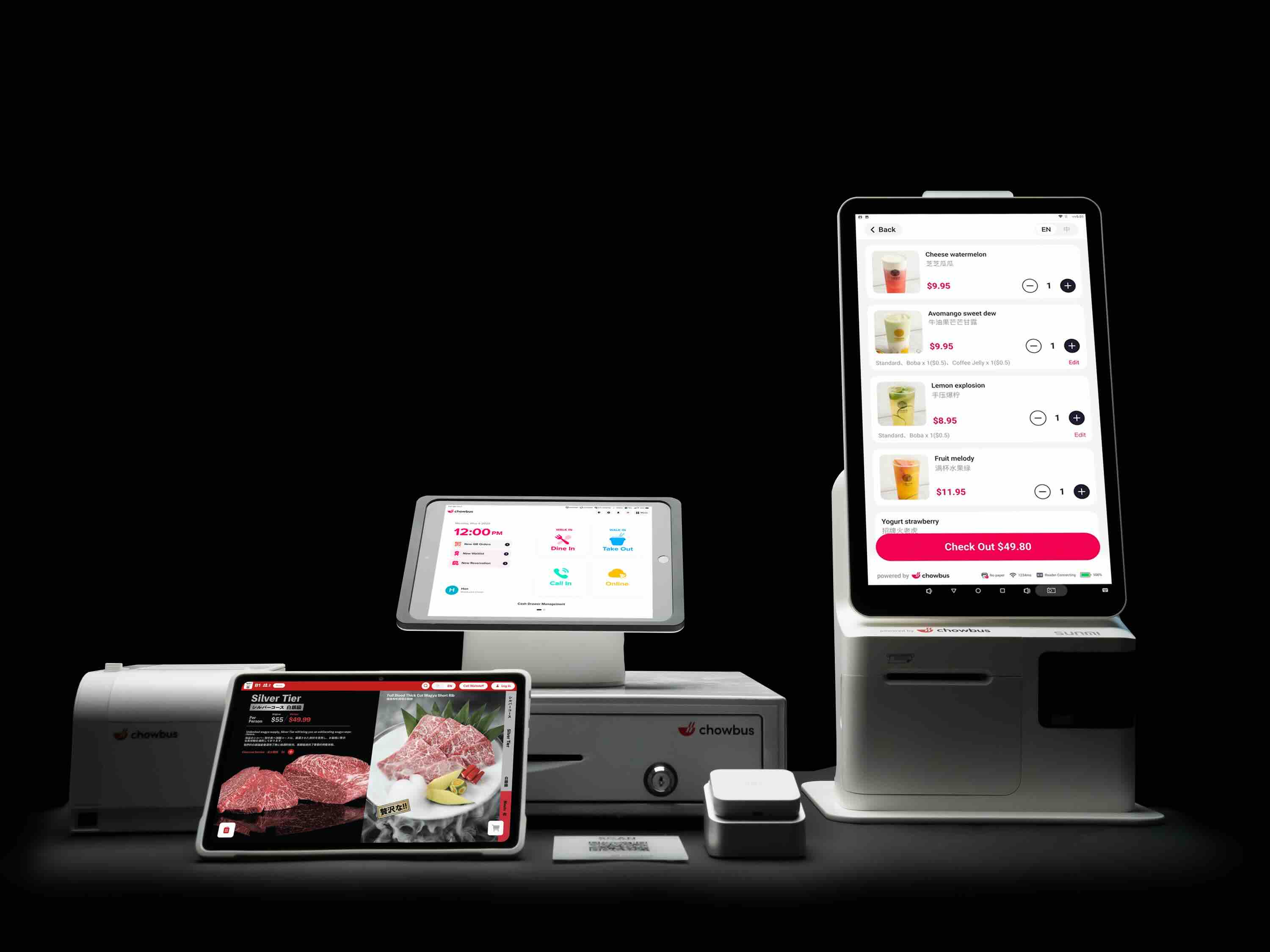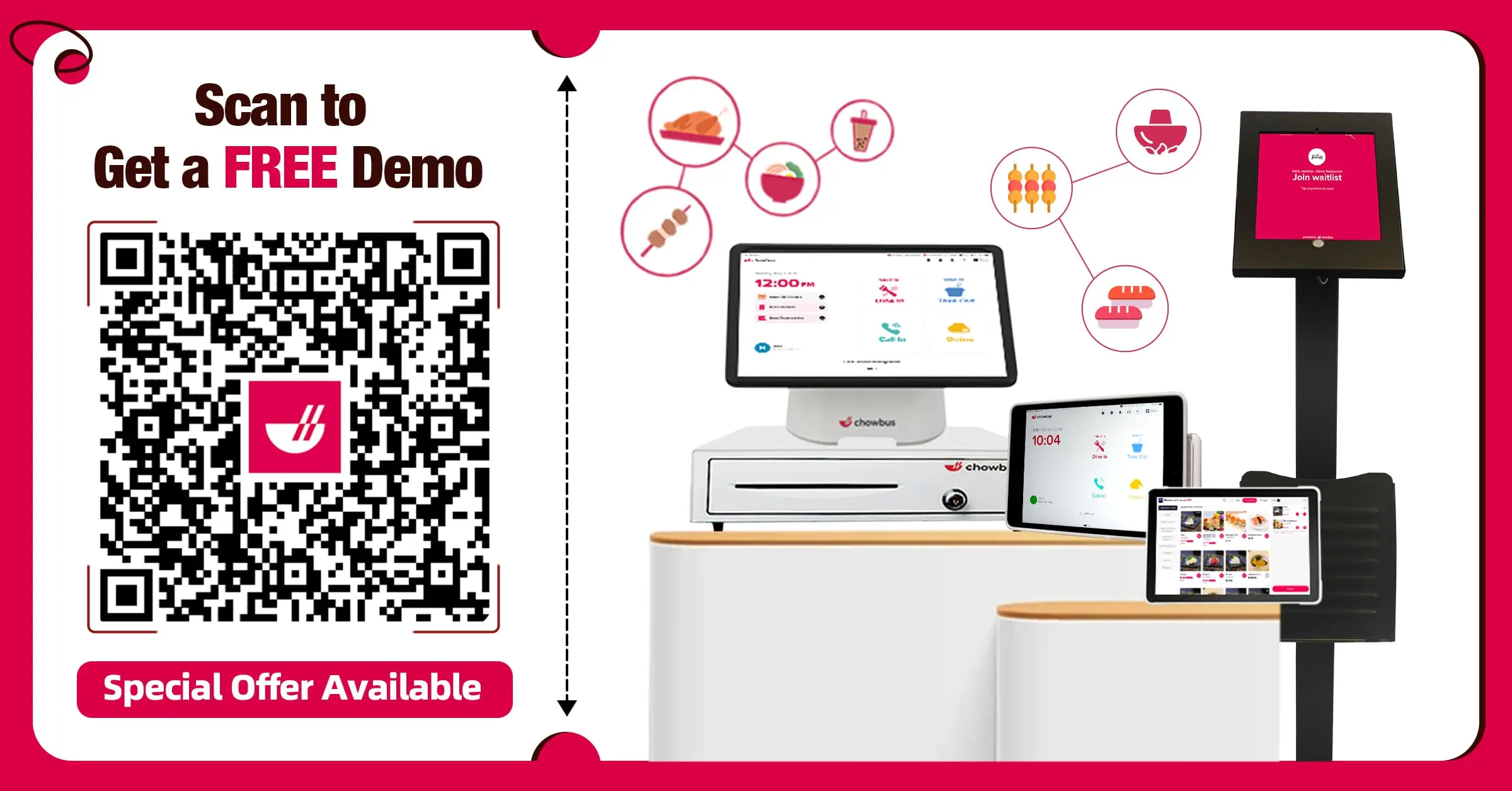How Innovative Restaurant Technology Solves Real Problems

Running a restaurant today means doing more with less—less staff, less time, and tighter margins. Guests expect faster service, smarter ordering options, and a better overall experience. Meanwhile, operators face pressure to streamline workflows across multiple locations without losing control. This is where innovative restaurant technology makes a difference. From smarter POS systems to automated prep tools, the right tech can simplify operations, reduce costs, and help your team serve better, faster, and more consistently.
This blog explores practical, scalable solutions you can use to solve common challenges and grow your business.

Innovative Restaurant Technology: Solving Modern Restaurant Challenges
Labor shortages, rising wages, and increasing guest expectations make running a restaurant more complex. Technology that simplifies tasks, speeds up service, and enhances customer experiences can ease the pressure—and grow revenue at the same time.
Here’s how innovative restaurant technology addresses today’s key challenges:
1. Labor Efficiency Without Compromising Service
Staffing remains unpredictable, and training takes time. Automating simple, repetitive tasks frees up employees to focus on higher-impact areas. For example:
Call-in order recognition: Systems identify the phone number and instantly pull up order history, delivery addresses, and loyalty status. This shortens call times and improves accuracy.
Self-ordering options: QR code menus, kiosks, and handheld POS tools reduce the need for order-takers while keeping service moving.
2. Convenience and Speed Guests Expect
Customers expect faster service and easier access—especially when ordering remotely.
Integrated online ordering: Orders placed on your website sync directly into the POS system. Support for Google Maps makes finding and ordering from your location easy. Plus, you avoid the high commission fees of third-party platforms.
Real-time order tracking and pick-up screens: These show order status clearly and use voice announcements. That means fewer missed orders and smoother handoffs.
3. Personalized, Repeatable Experiences
Modern diners want more than just convenience. They want perks—and they return for them.
Branded apps: Let guests browse menus, place orders, and earn rewards all in one place. Unlike third-party platforms, your app keeps the spotlight on your brand, promotions, and loyalty program—helping you build direct relationships and drive repeat visits.
Loyalty programs and promos: Discounts, point redemption, and targeted offers are available across every channel—POS, kiosk, app, QR, and tablet. These tools boost engagement while encouraging repeat visits.
4. Simplified Operations Across Multiple Locations
As businesses scale, keeping menus, promotions, and processes consistent becomes more difficult. Centralized systems help manage everything from one place.
All-in-one POS: Update menus, monitor sales, and push promotions across multiple stores in real-time.
Third-party delivery integration: Chowbus’s delivery integration tools automatically route orders from platforms like Uber Eats and DoorDash into your POS, eliminating manual entry and cutting errors.
Innovative restaurant technology solves real problems. It makes operations leaner, guest experiences smoother, and growth more manageable.
What Innovative Technology Might a Restaurant Use to Improve Business?
If you're asking what innovative technology might a restaurant use to improve business, here are practical, high-impact tools transforming operations today:
1. Cloud-Based POS with Delivery Integration
A modern POS system should do more than take orders. The most effective ones sync directly with third-party delivery platforms, so every order—whether it comes from Uber Eats or DoorDash—enters the POS automatically. No more switching between tablets or manually retyping tickets. Orders can be adjusted before they reach the kitchen, giving staff more control and saving time.
2. Advanced Online Ordering via Website + Google Integration
Direct online ordering helps you avoid the high commission fees of delivery marketplaces. With full integration into Google Search and Google Maps, guests can place pickup or delivery orders right from where they search. Operators typically pay just $1 or 5% per order—much lower than the 20–50% from third-party platforms.
3. Call-In Orders with Guest Recognition
When a guest calls, your system should know who they are. Caller ID connects with your database to pull up order history, delivery address, and loyalty status—allowing staff to provide fast, accurate, and personalized service without asking the same questions every time.
4. Smart Kitchen Display Systems (KDS)
Ditch the paper tickets. A KDS shows everything the kitchen needs—dishes to cook, items to pack, and which ones are most urgent. It helps avoid missed items, cuts down on communication errors, and keeps both full-service and quick-service teams on track.
5. Real-Time Order Pickup Screens with Voice Alerts
Reduce crowding at the counter and keep orders flowing. Pickup screens show real-time order progress so customers know when to step up. Built-in voice announcements keep things moving without staff needing to shout or repeat numbers.
6. Automated Drink Stations for Efficiency
Drink automation systems—especially in formats like bubble tea—speed up prep and ensure consistency. After ordering, customers receive a label with a QR code. Staff scans it at the boba machine, which handles the rest. That means less training, fewer errors, and faster output.
7. AI-Powered Staff Scheduling
Forecast scheduling tools now use past sales data, weather, seasonality, and staff availability to build smarter shift plans. This helps reduce labor waste, minimize understaffing, and improve team satisfaction by aligning schedules with real-time needs.
Each of these tools serves a purpose: simplify your workflows, reduce costs, improve service, and support consistent operations across one or many locations.
Innovative Restaurant Management Technology for Multi-Unit Success
Expanding your restaurant operations across multiple locations brings unique challenges. You need management technology that keeps pace and enhances your ability to oversee and synchronize every unit efficiently. Here’s how innovative restaurant management technology ensures success for multi-unit operations:
Unified Menu & Promotion Management
Consistently update and manage your menu items and pricing across all locations with centralized control. This cloud-based approach ensures that any changes you make are instantly reflected everywhere, maintaining brand consistency and operational harmony. It's ideal for running promotions that attract more customers without the headache of manual updates.
Omnichannel In-Store Ordering
Equip your restaurants with modern ordering solutions like handheld POS, kiosks, and tablets. These tools reduce staff workload and speed up service, enhancing the dining experience. QR code menus offer guests a contactless option that speeds up ordering while reducing errors, ensuring every guest receives prompt and accurate service.
Streamlined Guest Management
Digital waitlists and reservation systems transform how you manage guest flow, particularly during peak hours. These systems keep guests informed about wait times and table availability, improving their overall experience and reducing perceived wait times. This integration also allows staff to focus more on guest service rather than managing queues.
Efficient Staff Management and Scheduling
Automate staff scheduling, easily manage shift swaps, and handle tip distribution with integrated tools that save time and reduce administrative burdens. These systems offer real-time insights into staff performance and needs, allowing for better labor management and improved employee satisfaction.
By integrating these technologies, you can easily oversee multiple venues, ensure consistent customer experiences, and run a more profitable business. As you expand, these tools scale with you, mitigating the usual growing pains associated with managing several operations. Consider adopting these solutions to keep your business on the cutting edge and ahead of operational challenges.
Conclusion
Adopting innovative restaurant technology isn’t about chasing trends but solving everyday challenges with tools that work. From smarter ordering systems and real-time kitchen displays to branded apps and loyalty integrations, the right setup creates smoother workflows, stronger guest relationships, and more efficient multi-location management. These solutions help simplify operations, reduce labor pressure, and give your team the tools to serve with consistency and speed.
Now’s the time to audit your current tech stack and ask yourself:
What innovative technology might my restaurant use to improve business this year—and beyond?
Chowbus POS offers an all-in-one restaurant technology solution designed to help you simplify operations, speed up service, and scale with confidence—whether you’re managing one location or many.
Book a free demo or consultation with Chowbus POS today and see what’s possible.

Frequently Asked Questions About Innovative Restaurant Technologies
Here are answers to the most common questions we hear from restaurant professionals exploring new technologies. Whether you're streamlining operations, reducing costs, or elevating the guest experience, this FAQ covers practical tools and trends worth knowing.
What Type of Technology is Used in a Restaurant?
Restaurants use a variety of technology to enhance operations and improve customer experience. This includes Point of Sale (POS) systems for processing transactions, reservation and seating management software to streamline guest bookings, and kitchen display systems (KDS) to increase kitchen efficiency. Digital menus and online ordering platforms facilitate remote and in-house ordering, while customer relationship management (CRM) systems help personalize the dining experience.
What is Smart Kitchen Technology?
Smart kitchen technology refers to advanced systems and devices that automate and optimize food preparation, cooking processes, and kitchen management. This technology includes connected appliances, digital inventory tracking, automated cooking equipment, and AI-driven analytics that help enhance efficiency, reduce waste, and improve overall restaurant operations.
What Type of Technology Can Be Used in a Restaurant So that Customers Can Order Themselves Without Going Through Waiters?
Restaurants can utilize self-service kiosks, digital ordering apps, and QR code menus to enable customers to place orders on their own. Self-service kiosks are stand-alone devices where customers can browse the menu, customize their order, and pay directly at the kiosk. Digital ordering apps allow customers to use their smartphones to select items, customize orders, and make payments, often with options for both on-site dining and takeout.
QR code menus enable customers to quickly access the digital menu on their phones by simply scanning a code placed on their table or throughout the restaurant. All these technologies streamline the ordering process, reduce wait times, and enhance customer autonomy in choosing and customizing their meals.
For more insights and updates, check out the blog section. There’s always something new to discover in restaurant technology.

Recommended Articles: